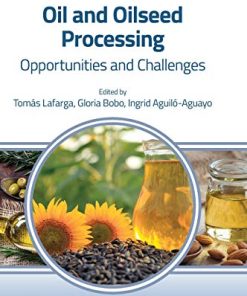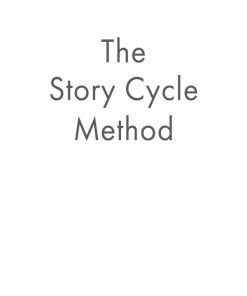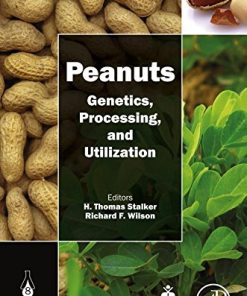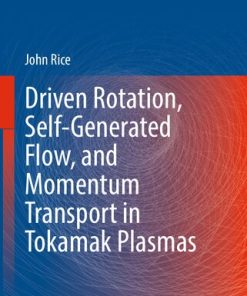Rice Bran and Rice Bran Oil Chemistry Processing and Utilization 1st edition by Ling Zhi Cheong 0128128291 9780128128299
$50.00 Original price was: $50.00.$25.00Current price is: $25.00.
Rice Bran and Rice Bran Oil: Chemistry, Processing and Utilization 1st edition by Ling-Zhi Cheong – Ebook PDF Instant Download/DeliveryISBN: 0128128291, 9780128128299
Full download Rice Bran and Rice Bran Oil: Chemistry, Processing and Utilization 1st edition after payment.
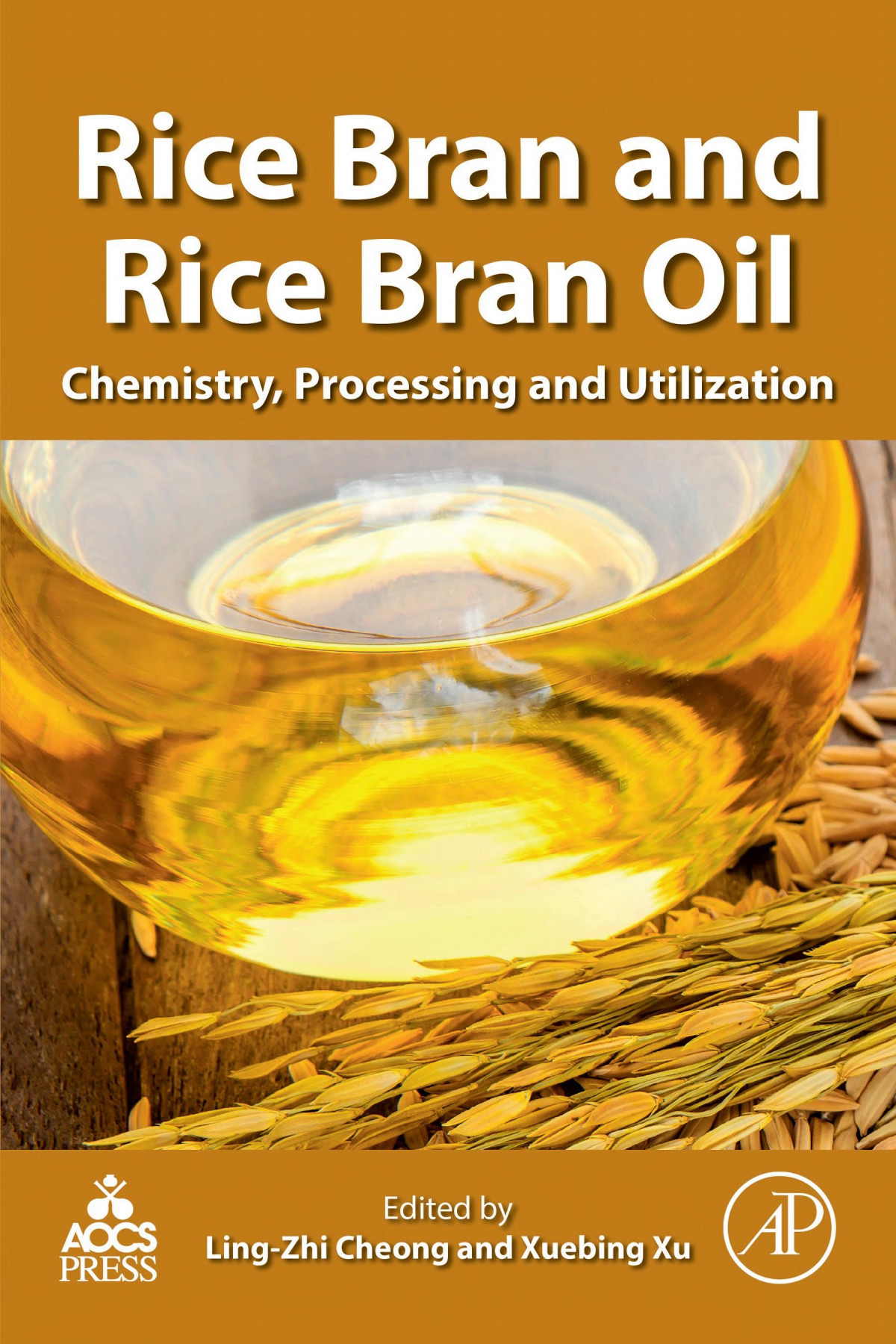
Product details:
ISBN-10 : 0128128291
ISBN-13 : 9780128128299
Author : Ling-Zhi Cheong
Rice Bran and Rice Bran Oil (RBO) provides much-needed best practices on the science and technology of RBO, including the chemistry, dectection methods, nutrition (including the effect of processing technologies on micronutrients) and applications. RBO contains many nutritional components, including up to 2% oryzanol, tocotrienol, and phytosterols. In addition, the fatty acid composition is well balanced with mainly oleic acid and very little linolenic acid, which allows for versatile uses in frying, cooking, and in formulating oil blends for food uses, especially as a trans-free alternative. Many food industrial sectors are seeking possibilities to use RBO in their products from not only Asia and South America, but also Europe and North America. However, there are many processing, analytical, and nutritional considerations that must be documented in one resource. This volume is perfect for those interested in understanding the many emerging potential uses for this alternative oil.
Rice Bran and Rice Bran Oil: Chemistry, Processing and Utilization 1st Table of contents:
Chapter 1: Chemistry of Rice Bran Oil
1. Introduction
2. Oil Content of Rice Bran
3. Fatty Acid Composition of Rice Bran Oil
4. Free Fatty Acid Content of Rice Bran Oil and Various Neutralization Approaches
4.1. Free Fatty Acid Content
4.2. Rice Bran Oil Neutralization Techniques
5. Rice Bran Oil Oxidation
6. Other Chemical Reactions With Rice Bran Oil
7. Conclusions
References
Chapter 2: Nutritional Studies of Rice Bran Oil
1. Introduction
1.1. Composition and Nutritive Value
1.2. Clinical Trials in Humans using Rice Bran Oil
2. Oryzanol
2.1. Functions of Oryzanol
2.1.1. Antioxidant
2.1.2. Hypolipidemic Effect
2.1.3. Antidiabetic Effect
2.1.4. Anticancer Effect
2.1.5. Effect on Menopause
2.1.6. Effects on Dementia
2.1.7. Other Effects
3. Phytosterols and Squalene
4. Waxes and Policosanol
5. Vitamin E
5.1. Tocotrienols
5.2. Antitumor Effects
5.3. Antiinflammatory Effects
5.4. Cardioprotective Effects
5.5. Antidiabetic Effects
5.6. Bone-Protective Effects
5.7. Immunomodulatory Effects
6. Concluding Remarks
References
Chapter 3: Processing Technology of Rice Bran Oil
1. Introduction
2. Stabilization of Rice Bran
3. Preferred Process for Refining of Rice Bran Oil
3.1. Physical Refining Versus Chemical Refining
4. Problems With Physical Refining
5. Quality Requirement of Oils Meant for Physical Refining
6. Pretreatment-The Key Factor
7. Degumming of Rice Bran Oil
8. Commonly Used Degumming Techniques
8.1. Water Degumming
8.2. Acid Degumming
8.3. Super Degumming
8.4. Total Degumming Process (TOP)
8.5. Enzymatic Degumming
8.6. Membrane Degumming
9. Bleaching of Rice Bran Oil
9.1. Bleaching of RBO in a Batch Process
9.2. Challenges During Bleaching and Recommended Precautions
9.3. Industrial Bleaching Processes
9.4. Dry Bleaching Process
9.5. Wet Bleaching Process
9.6. Two-Stage Bleaching Process
9.7. Countercurrent Bleaching
10. Dewaxing of Rice Bran Oil
10.1. Factors Affecting Dewaxing Process
10.2. Miscella Dewaxing
11. Winterization of Rice Bran Oil
12. Deodorization/Deacidification of Rice Bran Oil
12.1. Various Studies on Rice Bran Oil Deodorizing Conditions
12.2. Different Types of Deodorizers and Problems Encountered in Deodorization
12.3. Effect of Deodorization Conditions on the Minor Components/Micronutrients
12.3.1. Effect of Deodorization Temperature and Time on the Oryzanol Content
12.4. Effect of Deodorizing Conditions on the Content of Trans Fatty Acid
13. Value Addition to Rice Bran Oil Refining Byproducts
14. Conclusion
References
Further Reading
Chapter 4: Bioprocessing Technology of Rice Bran Oil
1. Introduction
2. Enzymatic Stabilizing of Rice Bran
2.1. Introduction
2.2. Enzymatic Stabilizing
2.3. Section Summary
3. Enzymatic Degumming of rice bran oil
3.1. Introduction
3.2. Phospholipase
3.3. Enzymatic Degumming Processes
3.4. Enzymatic Degumming of RBO
3.4.1. Liquid Enzyme
3.4.2. Immobilized Enzymes
3.5. Section Summary
4. Enzymatic Deacidification of rice bran oil
4.1. Introduction
4.2. Lipase for Deacidification
4.3. Acyl Acceptor for Enzymatic Deacidification
4.3.1. Glycerol and its Ester Derivatives as Acyl Acceptor
4.3.2. Other Acyl Acceptors
4.4. Enzymatic Deacidification Process Development
4.5. Enzyme Reusability for Industrialization Purpose
4.6. Section Summary
5. Enzymatic Interesterification of rice bran oil
5.1. Introduction
5.2. Industrialization in Food Industry
5.3. EIE Application in RBO
5.4. Section Summary
6. Chapter Summary
References
Further Reading
Chapter 5: Micronutrients in Rice Bran Oil
1. Introduction
2. Gamma-Oryzanol
2.1. Chemical Structure
2.2. Properties
2.3. Analysis, Extraction, and Purification
2.4. Uses and Applications
3. Tocopherols
3.1. Chemical Structure
3.2. Properties
3.3. Analysis, Extraction, and Purification
3.4. Uses and Applications
4. Tocotrienols
4.1. Chemical Structure
4.2. Properties
4.3. Analysis, Extraction, and Purification
4.4. Uses and Applications
5. Phytosterol
5.1. Chemical Structure
5.2. Properties
5.3. Analysis, Extraction, and Purification
5.4. Uses and Applications
6. Squalene
6.1. Chemical Structure
6.2. Properties
6.3. Analysis, Extraction, and Purification
6.4. Uses and Applications
7. Phospholipids
7.1. Chemical Structure
7.2. Properties
7.3. Analysis, Extraction, and Purification
7.4. Uses and Applications
8. Conclusion
References
Further Reading
Chapter 6: Applications of Rice Bran Oil
1. Introduction
2. Food Applications
2.1. Cooking
2.2. Deep Frying
2.2.1. Stability
2.2.2. Flavor
2.2.3. Cuisine Case: Tempura
2.3. Salad Dressing and Baking
3. Functional Food Applications
4. Pharmaceutical Applications
4.1. Cholesterol-Lowering Effect
4.2. Antihypertension
4.3. Hyperglycemia-Lowering Effect
4.4. Insomnia Alleviation
4.5. Other Functions
5. Cosmetic Applications
6. Industrial Applications
6.1. Byproducts
6.2. Biodiesels
7. Conclusion
References
Chapter 7: Analytical Aspects of Rice Bran Oil
1. Compositional Analysis
1.1. Fatty Acid Composition
1.2. γ-Oryzanol
1.3. Vitamin E Homologues and Derivatives
1.4. Phenolic Compounds
1.5. Phospholipids
2. Quality Analysis
2.1. Sensory Analysis
2.2. Chemical Analysis
2.2.1. Color
2.2.2. Primary Oxidation Products
2.2.3. Secondary Oxidation Products
2.2.4. Free Fatty Acid (FFA)
2.2.5. Iodine Value (IV)
2.2.6. Polar Compounds (PC)
2.2.7. Oxidative Stability Index (OSI)
2.3. Analysis of Hazardous Materials
2.3.1. Trans-Fatty Acid (TFA)
2.3.2. Polycyclic Aromatic Hydrocarbons (PAH)
3. Challenges Concerning the Analysis of Rice Bran Oil
References
Chapter 8: Development of Rice Bran Functional Food and Evaluation of Its Healthful Properties
1. Introduction
2. Basic Composition of Rice Bran
3. Fermented Rice Bran Preparation and Functional Improvement
4. Rice Bran-Based Functional Food, a Drug Alternative
4.1. Anticolitis Effects of Fermented Rice Bran
4.2. FRB in DSS-Induced Colonic Cancer and Gastrointestinal Disorders
4.3. Preventive Role of FRB on Tumorigenesis
4.4. Role of FRB on Metabolic Disorders
5. Fermented rice bran Modulates Multifactorial Metabolic Disease and Its Sensor (Glucose, Insulin,
6. Conclusion
References
Further Reading
Chapter 9: Rice Husk, Rice Husk Ash and Their Applications
1. Introduction
2. Characterizations of Rice Husk/Rice Husk Ash
2.1. Characterizations of RH
2.2. Characterizations of RHA
2.3. Characterization of Silica in RH/RHA
2.4. Factors Affecting the Properties of RHA
3. Production of Silica From rice husk ash
3.1. Alkaline Extraction and Acid Precipitation of Silica
3.2. Recyclable Routes for Production of Silica
3.3. Sodium Carbonate Activation
3.4. Other Methods
4. Production of Silica Aerogel From rice husk ash
5. Application of rice husk/rice husk ash as Bioadsorbent
5.1. Adsorbent in Vegetable Oils Refining
5.2. Adsorbent for Removal of Heavy Metals
5.2.1. Removal of Heavy Metals by RH
5.2.2. Removal of Heavy Metals by RHA
6. Conclusion
References
Chapter 10: Nutritional Ingredients and Active Compositions of Defatted Rice Bran
1. Introduction
2. Nutritional Ingredients and Their Contents in Rice Bran and Defatted RICE Bran
3. Starch in Rice and Rice Bran
3.1. Properties of Starch in Rice and Rice Bran
3.2. Digestibility of Starch
3.3. Applications of Rice Starch
4. Nonstarch Polysaccharides
4.1. Different Kinds of Nonstarch Polysaccharides
4.1.1. Cellulose
4.1.2. Mixed-Linked β-Glucans
4.1.3. Mixed-Linked α-Glucans
4.1.4. Arabinoxylan
4.2. Preparation of Nonstarch Polysaccharides
5. Rice Bran Proteins
6. Other Active Phytochemicals in defatted rice bran
7. The Development Prospect of Defatted Rice Bran
References
Chapter 11: Rice Bran Protein: Extraction, Nutraceutical Properties, and Potential Applications
1. Introduction
2. Nutraceutical Properties and Health Benefits of Rice Bran Protein
2.1. Protein Quality
2.2. Hypoallergenicity
2.3. Health Benefits of Rice Bran Protein
2.3.1. Antioxidant Capacity
2.3.2. Antihypertensive Effect
2.3.3. Antidiabetic Effect
2.3.4. Anticancer Activity
2.3.5. Cholesterol-Lowering Effect
3. Extraction of Rice Bran Protein
3.1. Alkali Extraction
3.2. Enzymatic Extraction
3.3. Sequential Solvent Extraction and Dissociating Agent
3.4. Physical Methods
3.5. Subcritical Water
4. Rice Bran Protein Application
4.1. Protein Supplement
4.2. Rice Bran Proteins as Bioactive Compounds Carrier
4.3. Flavor Enhancer
4.4. Antiretrogradation
4.5. Rice Bran Proteins in Cereal Products
4.6. Rice Bran Protein-Based Film
4.7. Rice Bran Protein-Related Commercial Products
5. Closing Remarks
People also search for Rice Bran and Rice Bran Oil: Chemistry, Processing and Utilization 1st:
rice bran oil names
rice bran oil good or bad
rice bran oil recipe
rice bran oil vs rice water
rice oil vs rice bran oil
Tags: Rice Bran, Rice Bran Oil, Chemistry, Processing, Utilization, Ling Zhi Cheong
You may also like…
Children's Books - Comics & Graphic Novels
Tarzan the Untamed (1941 Big Little Books) Edgar Rice Burroughs
Business & Economics - Industries
Cookbooks
Rice Is Life 1st edition by Caryl Levine, Ken Lee, Kristin Donnelly 1797214934 9781797214931
Children's Books
Tarzan Lord of the Jungle Big Little Book Edgar Rice Burroughs
Uncategorized
dictionaries & phrasebooks
Physics - Plasma Physics
Driven Rotation, Self-Generated Flow, and Momentum Transport in Tokamak Plasmas John Rice
Uncategorized





